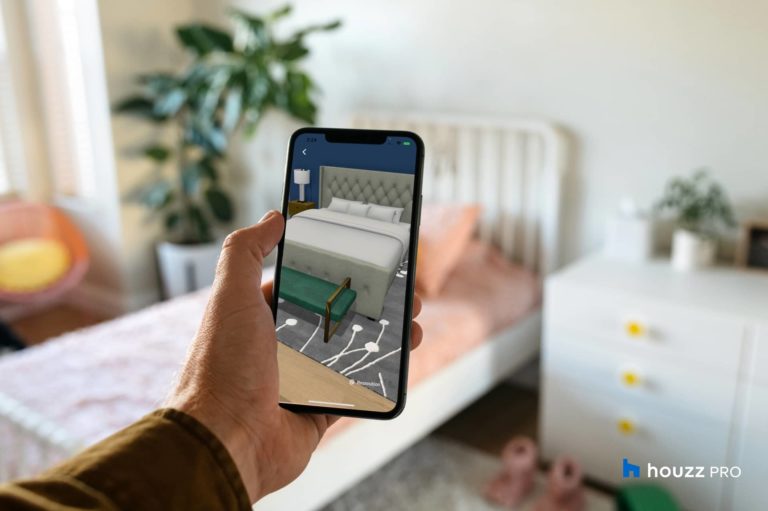
Just about everyone today has been exposed to the world of augmented reality. Simply put, AR is the layering of virtual content over real-life environments. Technology has brought us to a point where AR plays a significant role in forming the metaverse, where many businesses are setting up immersive “phygital” experiences for customers and clients. For example, the emerging use of AR in business is changing the way consumers shop, the applications, tools, and platforms developers use, and how businesses operate.
As AR effectively blurs the lines between the virtual and physical worlds, it offers different ways for businesses to interact with prospects, customers, suppliers, and colleagues. So, how can businesses make the most of the metaverse with AR?
Ways to Implement AR in Business
Businesses are always trying to improve their user experience, while customers are always looking for convenient, efficient, new, and exciting trends. AR technology helps businesses produce realities that go above and beyond simply enhancing the customer experience. Here are some of the most effective ways AR is being implemented in business today.
1. Employee Training
Gone are the days when employee training consisted of boring textbooks and informational videos. Most people learn best when completely immersed in a hands-on task, which is precisely what AR can offer for upskilling employees. Through a combination of interactive materials, engaging tasks, and close supervision, AR immerses employees into a pore-designed world that leaves a lasting impression.
2. Product Development
Recent studies conducted by PWC United Kingdom have concluded that businesses in every industry can significantly benefit from using AR to simplify product development. This form of digital visualization helps increase the organization and efficiency of processes and workflows. AR solutions allow everyone involved in the product development process to use smart devices to interact with them closely wherever they are. AR also allows design ideas to be presented to other departments, stakeholders, investors, and customers instantly and conveniently.
3. Marketing
The main aim of marketing has always been to deliver enticing and engaging information to potential clients or customers in the hopes that they will become regular patrons of the business. In the past, marketing equated with flashy sales advertising. As the internet took over, marketing evolved to social media. Now, the future of marketing lies in AR, which can add an interactive, virtual component to traditional marketing materials, making them more exciting and immersive.
4. Communication
Business communications often involve a vast network of people who need to be kept up to speed, and AR applications have excellent potential for helping with this. AR solutions are poised to help businesses develop interactive live data simulations, from data visualization to easy access to data. AR can also help with strategic communications that require an in-person type of experience.
5. Consumer Support
There are several ways in which AR can improve a business’ communication and satisfaction with its customers. From creating an appealing environment and product assortment to providing easy transactions, adaptability, and connection with the brand and other customers, the role of AR in securing customer support and satisfaction is evident. An excellent example of this is in physiotherapy; if a patient needs to practice specific exercises, he can use a smartphone app that uses AR and accelerometer data to track his movements and guide him through those exercises without needing to be physically present with a doctor.
What About the Metaverse?
Building from the above, there are three main qualities that businesses need to focus on when using AR to make the most of the metaverse.
- Rule number one is to leverage innovators. Use the knowledge and expertise of forward-thinking AR professionals who specialize in perfecting AR-specific projects.
- Rule number two is to keep things simple. Like any virtual experience, if it’s too complex for users, you will lose them. Ensure you’re using AR to solve an obvious business need or customer pain point.
- Lastly, don’t create an experience that’s too far removed from reality. Ensure you’re extending natural experiences and leaving the “out of this world” experiences to virtual reality applications.
Industries Utilizing AR Today
Businesses in almost every industry can benefit from using AR applications in various ways. In addition to the various use cases outlined above, here’s a glimpse into some of the industries and verticals already utilizing AR, and how.
Retail
Customer experience is a priority for every retail business. With AR blurring the lines between physical and digital shopping, businesses can bridge the gap in a new phygital world, introducing new and improved ways for consumers to shop in the metaverse. For example, e-commerce clothing stores can use AR to allow users to see an article of clothing in a 3-D format, even enabling them to see what it would look like on their bodies. Home-décor applications can utilize new capabilities of ARKit to do better surface mapping for furniture placement or tilings simulations.
Other use cases include product information enrichment in physical stores, with assets that connect them to the digital eCommerce experience – thus creating a true phygital user experience.
Industrial
Industrial markets can use AR to be more productive while streamlining their processes, ultimately changing how many jobs are performed. Field technicians can benefit especially by receiving accurate live support from remote staff, removing most guesswork from manual work. NASA constructing new spacecraft using Microsoft’s HoloLens is an excellent example of this.
Design/Creative
AR stands to have the most significant impact on businesses in the design and creative industries. The ability to superimpose 3-D models over physical spaces allows businesses to produce stronger marketing and sales materials, among other things. In the arts and CAD spaces, AR provides a way to create a more accessible presentation and workflow by providing the means to render products, models, and other assets in a 3-D space. For example, product designers in manufacturing companies use AR to iterate on designs and then model them in a 3-D space, saving time, materials, and guesswork.
Healthcare
AR solves a prevalent issue in the healthcare industry by eliminating gaps caused by lack of access and physical distance. AR allows experience, expertise, and visuals to be delivered to clients and patients without them needing to be physically present with a doctor. For example, the Proximie app allows surgeons worldwide to mark patients for procedures and provide guidance remotely.
From Novelty Entertainment to Essential Enterprise
When AR was first realized, it was a novelty entertainment concept. Today, however, the business has taken it to a whole new level, using it as an essential enterprise tool. According to recent statistics, by 2030, 23 million jobs will likely be directly affected by AR and VR, over 800,000 of which are currently using them in the workplace. By incorporating AR into sales, marketing, communication, training, and recruitment, businesses can leverage this new technology to make the most of the metaverse.
 Eran Galil is the CTO & Co-Founder of ByondXR.
Eran Galil is the CTO & Co-Founder of ByondXR.

